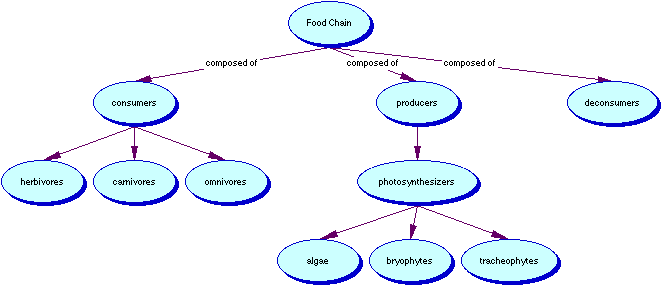![]()
![]()
Although mapping was used in both of the reading process procedures described above, the concept of mapping deserves additional discussion. Semantic mapping is the structuring of information in graphic form. It is not a new process, and has been known as concept mapping, webbing, networking and plot maps. Semantic mapping is a tool that teachers can use to help students connect prior knowledge with new science concepts to be learned in terms of a schemata or a wholistic conceptual system. In many cases, new science words are often introduced and defined in isolation from a more general system of idea.
As Heimlich and Pittelman point out, semantic maps are diagrams that help students see how words or concepts are related to one another. In most cases semantic mapping begins with a brainstorming session in which students are encouraged to make associations to the main topic or concept presented. Students are actively engaged in using their prior knowledge, as well new science concepts and experiences that the teacher has provided to develop a semantic map. Semantic maps can be accomplished individually, or in small cooperative groups, or with the whole class.
Semantic maps (Figure 1) can be used in many different contexts in the science classroom including:
1. As a science vocabulary (concept) building strategy2. As a pre and postreading strategy
3. As a science study skill strategy
Figure 1. Semantic Map for Rock Types
Heimlich and Pittelman have developed a basic strategy for developing semantic maps; this strategy can be used in any of the three purposes listed above. The following is an adaptation of their strategy:
1. Choose a science concept related to the chapter or unit students are studying.2. List the concept on large chart paper or on the chalkboard.
3. Encourage the students to think of as many words or concepts as they can that are related to the main concept (see the example on sharks in Figure 8.27) and to list them in categories on the paper. This step of the process can be done individually, in a small team or with whole class. Encouraging interaction among the students is an important part of the process, and therefore most teachers choose to do this as a small group or whole class activity.

4. Students can share their results with each other.
5. Students should discuss by comparing and contrasting their semantic maps in order to develop deeper understanding of science concepts.